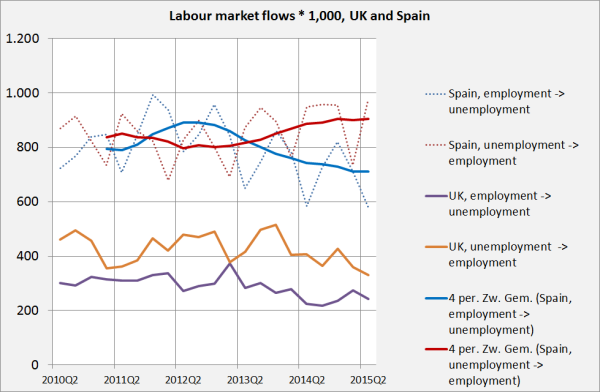Labour market flows and the musical chairs economy
Net employment has been increasing at a brisk pace in the UK and, since the third quarter of 2013, in Spain. Eurostat (kudo’s) has new data about this: labour market flows. This statistic shows how many employed people became unemployed, how many unemployed people became employed, how many ‘inactive’ people became ‘active'(i.e. became employed or started looking for a job) and how many ‘active’ people became ‘inactive’.
The graph shows that in Spain, the main cause why net employment is increasing fast is a decline in the number of people who are getting unemployed, though the number of unemployed who get a job has increased, too (the flows into and out of activity have been neglected in the graph). In the UK, both flows have declined but the net difference, which is what counts, has stayed more or less stable. As the number of ‘active’ people in Spain also declines (mainly females), unemployment is plummeting.
The raging toro in the room: despite the fact that the Population of Spain is about two-thirds of the UK population, flows in Spain are about twice as high as in the UK! Flows in France are by the way higher too than in the UK while flows in Switzerland seem to be especially low. Which of course indicates that (A) all this talk about the inflexible Spanish labour market is nonsense . While it (B) also indicates that high rates of ‘churn’, like in Spain, are no prerequisite for brisk employment growth, contrary to neoliberal dogma. It is just an ineffective, inefficient ‘musical chairs’ kind of economy which forces people and companies to pay inordinate amounts of time to finds work or workers and to train workers and where families have difficulties to plan ahead because of frequent spells of unemployment.

































Recent Comments